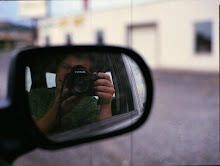




When I first started shooting, I saw some of Ansel Adams shots and said yea good shot but so what? It wasn't until I began learning about the wonders of the darkroom, and read his books describing how to shoot, develop, and print, that I learned to appreciate the work he had done. I bring this up because I've developed the first of three rolls of film from last weekend (I know its Friday, I'm behind schedule ok?) and found that many of my images lacked contrast. This is easy to fix on the computer of course, but its also easy to fix in the darkroom. However, part of the magic that was Ansel Adams, is he fixed these things one step earlier in development. Rather than adjust while printing, he printed on one level of contrast paper, and adjusted the negative during processing to get the results he wanted.
The man was a master.

No comments:
Post a Comment